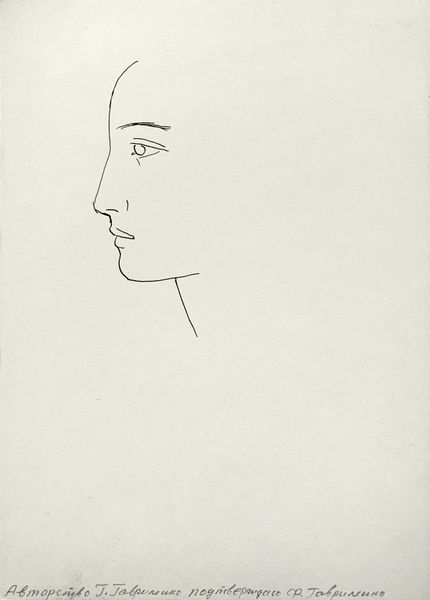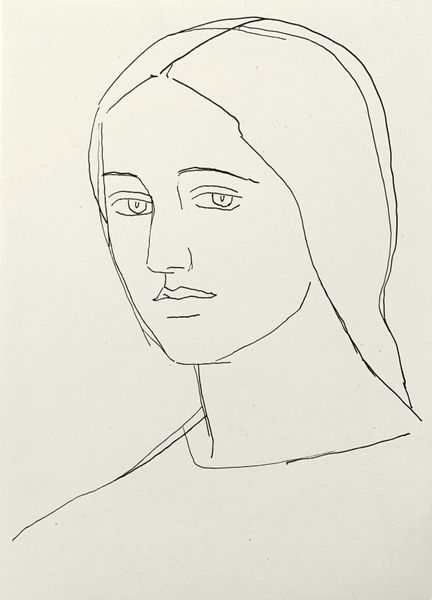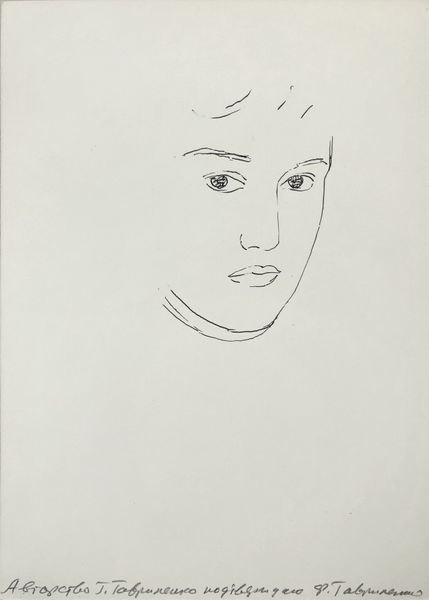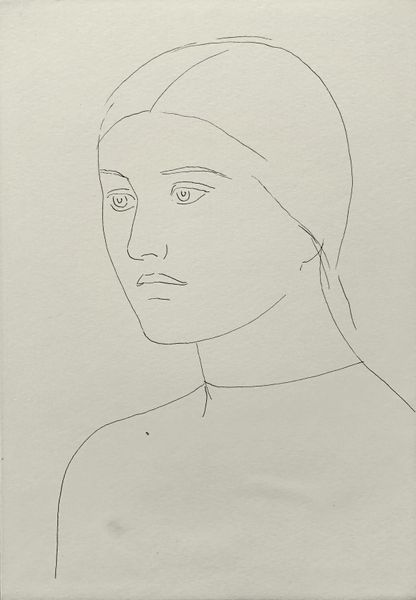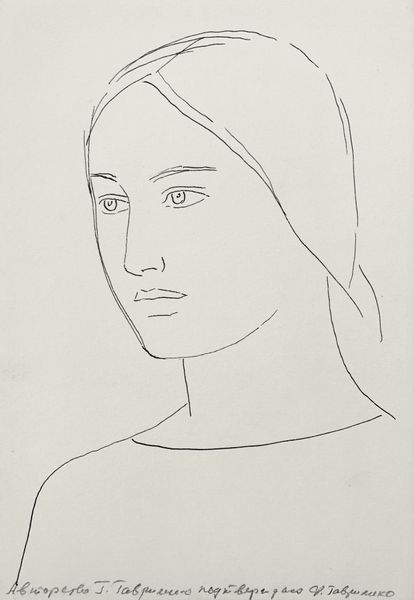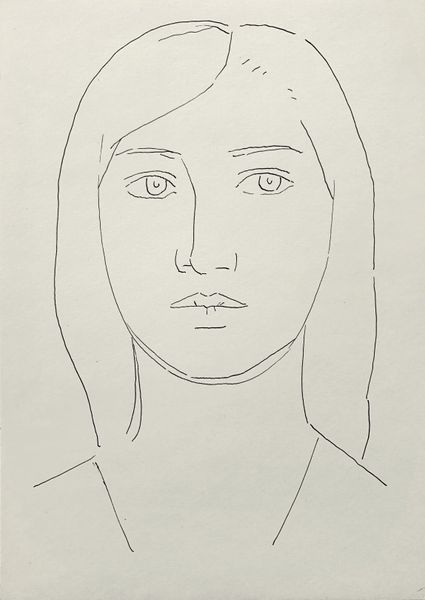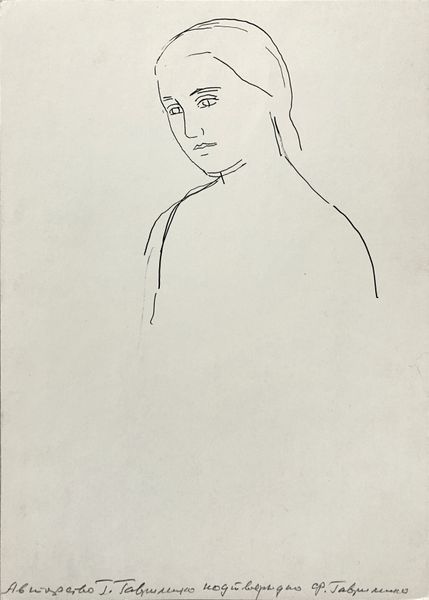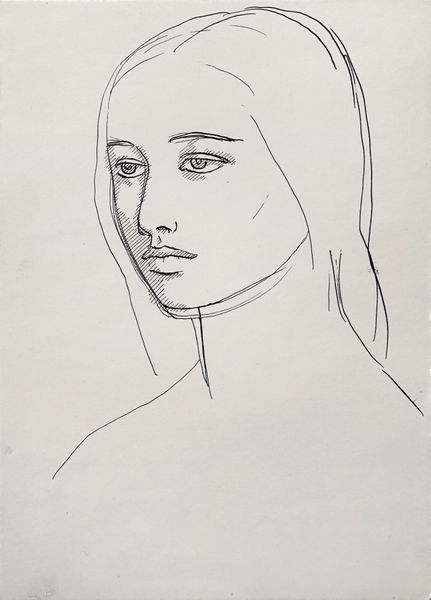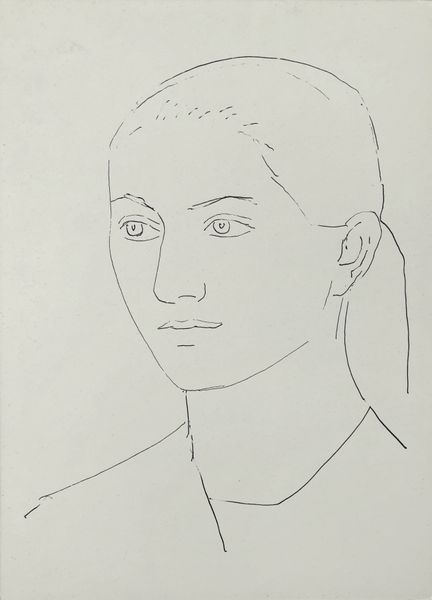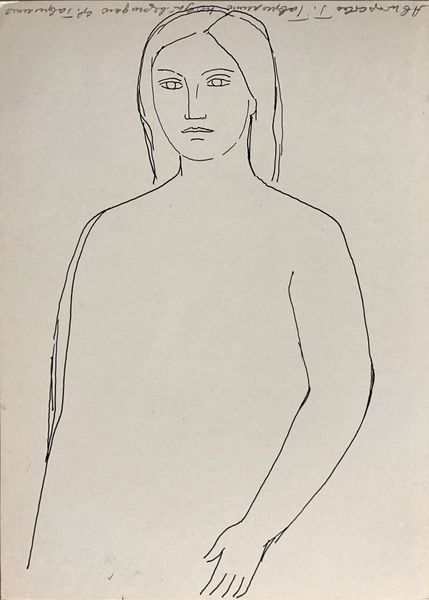
drawing, paper, ink
#
portrait
#
drawing
#
figuration
#
paper
#
ink
#
line
#
portrait drawing
Copyright: Hryhorii Havrylenko,Fair Use
Curator: The drawing before us, from 1975, is entitled "Female image. Sketch" by Hryhorii Havrylenko. It’s a work on paper using ink to create a delicate portrait. Editor: The stark simplicity really strikes me. It's economical in its use of line, and feels unfinished, almost vulnerable. There’s an air of quiet introspection in her gaze. Curator: I agree. The economy of the lines directs our attention to the history of representation of the female form. Think about how it either reflects or challenges traditional portraits in art and consider the lack of contextual clues; this is clearly intended to prompt us to question the artist's intent and the sitter's role. Editor: Speaking of history, I'm drawn to the medium itself – ink on paper. A basic and accessible method of production, almost like an everyday tool of record for a sketch. Its accessibility challenges any aura of preciousness sometimes attributed to the work itself. What were the working conditions in which Havrylenko would have created such work? Were they constrained or freeing? Curator: I think it certainly opens the field to interpret what such work was meant to achieve when displayed – perhaps it served as social commentary within Soviet artistic circles regarding gender and individual representation. The sparseness of the piece encourages debate about idealized images versus authentic representation. Editor: Absolutely, and those fine lines! There's a kind of care present despite their seeming simplicity. They're a reminder that behind every artistic output, regardless of form, labor is materialized and should be recognized as such. It pushes us to reconsider value outside purely aesthetic parameters. Curator: True. The work encourages a critical dialogue that is sensitive to political dimensions but open to multiple narratives relating to the female gaze and the construction of identity under strict socio-political conditions. Editor: So while its simplicity initially appears unassuming, there's both thoughtful craftsmanship involved as well as opportunity for historical contextualizing which truly engages. Curator: Precisely. I believe we see within this study an intimate reflection presented through economical methods which reveals greater meanings.
Comments
No comments
Be the first to comment and join the conversation on the ultimate creative platform.
